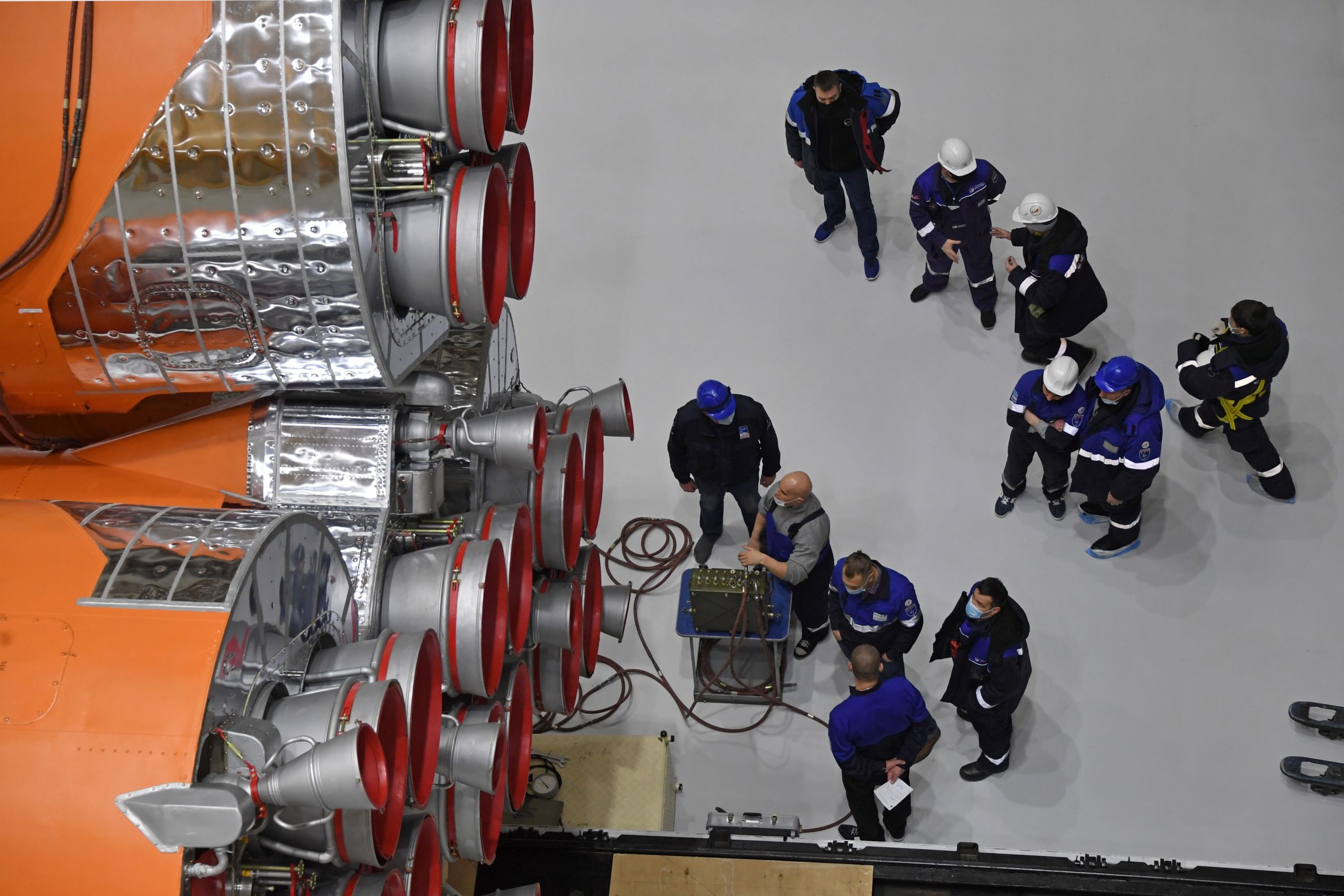
Personnel put together for transporting a Soyuz-2.1b rocket booster with British OneWeb satellites to a start pad at the Vostochny Cosmodrome. Yuri SmityukTASS by using Getty Pictures
With much more than 1,000 Starlink satellites beaming world wide web signals from the sky, SpaceX is main the race of constellation-based mostly broadband services. But its ambitious start strategy makes space environmentalists nervous: SpaceX has applied for regulatory authorization to deploy 42,000 Starlink satellites around the up coming number of a long time in lower Earth orbit, an spot presently significantly crowded with artifical objects and particles. Which is probably why Starlink’s major competitor, U.K.-primarily based OneWeb, irrespective of possessing released fewer than 200 satellites, is seeking to create a more effective edition of the emerging know-how.
A consortium of area companies led by OneWeb has secured $45 million in funding from the British government to start a “beam-hopping†satellite next calendar year to exam a next-era community it aims to launch in 2025.
These new satellites, known as Joey-Sat, are developed to be able to direct beams to raise ability in distinct parts in response to need spikes or emergencies. “From helping during a disaster to furnishing broadband on planes, this astounding technology will demonstrate how upcoming-technology 5G connectivity can benefit all of us on Earth,†U.K. Science Minister Amanda Solloway claimed in a assertion Monday.
OneWeb is teaming up with antenna maker SatixFy, floor station builder Celestia and place debris elimination startup Astroscale. The pilot mission is funded by the U.K. Room Agency through the European Place Agency’s Dawn method.
SatixFy, which receives the largest chunk of the fund ($35 million), will be tasked to develop Joey-Sat’s beam-hopping payload and user terminals.
In March, SatixFy agreed to create an in-flight connectivity terminal for OneWeb’s present LEO constellation. The firm has a related deal with the Canadian satellite operator Telesat, delivering modem chips that will support beam hopping for Telesat’s Lightspeed LEO constellation challenge.
Celestia will construct and take a look at floor stations for Joey-Sat that aspect a new multi-beam, electronically steered antenna. Astroscale is commissioned to produce technologies that could properly de-orbit these satellites when they are lifeless so that they will not become totally free-floating house junk.
“This ambitious challenge with OneWeb is the future move to maturing our systems and refining our U.K. capabilities to create a whole-support Lively Debris Removing presenting by 2024,†Astroscale U.K. controlling director John Auburn claimed in a assertion.
OneWeb is partly owned by the U.K. federal government. The firm aims to commence satellite broadband support to north of 50 levels latitude by June, which would go over the U.K., northern Europe, Greenland, Iceland, Canada and Alaska.

